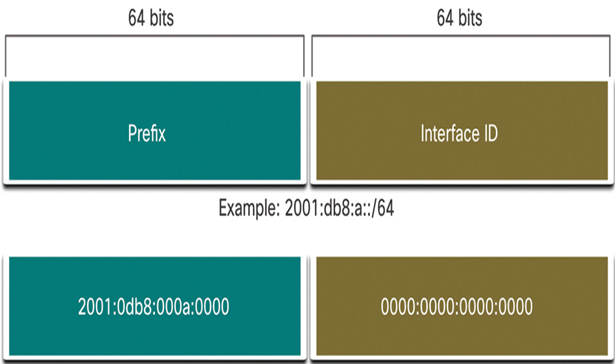Upon completion of this chapter, you will be able to answer the following questions:
- What are the types of IPv6 network addresses?
- How do you configure static global unicast and link-local IPv6 network addresses?
- How do you configure global unicast addresses dynamically?
- How do you configure link-local addresses dynamically?
- How do you identify IPv6 addresses?
This chapter uses the following key terms. You can find the definitions in the Glossary.
Extended Unique Identifier (EUI-64)
global routing prefix
global unicast address (GUA)
interface ID
link-local address (LLA)
Router Advertisement (RA) message
Router Solicitation (RS) message
solicited-node multicast address
Stateless Address Autoconfiguration (SLAAC)
stateful DHCPv6
stateless DHCPv6
subnet ID
well-known IPv6 multicast address
Introduction (33.0)
Hi, it’s Webster. Well, that last chapter was a lot of new information for me. And now there is a whole new type of IP address—IPv6! But I’m feeling confident that I can learn this.
Halimah knows a lot about IPv6 addressing and she is happy to see that it is incorporated into her company’s network strategically. This will help the company’s network continue to grow and change.
Here’s your chance to get up to speed on IPv6, too!
This section introduces the different types and uses of IPv6 addresses.
Unicast, Multicast, Anycast (33.1.1)
As with IPv4, there are different types of IPv6 addresses. In fact, there are three broad categories of IPv6 addresses:
- Unicast—An IPv6 unicast address uniquely identifies an interface on an IPv6-enabled device.
- Multicast—An IPv6 multicast address is used to send a single IPv6 packet to multiple destinations.
- Anycast—An IPv6 anycast address is any IPv6 unicast address that can be assigned to multiple devices. A packet sent to an anycast address is routed to the nearest device having that address. Anycast addresses are beyond the scope of this course.
Unlike IPv4, IPv6 does not have a broadcast address. However, there is an IPv6 all-nodes multicast address that essentially gives the same result.
The prefix, or network portion, of an IPv4 address can be identified by a dotted-decimal subnet mask or prefix length (slash notation). For example, an IPv4 address of 192.168.1.10 with dotted-decimal subnet mask 255.255.255.0 is equivalent to 192.168.1.10/24.
In IPv4 the /24 is called the prefix. In IPv6 it is called the prefix length. IPv6 does not use the dotted-decimal subnet mask notation. Like IPv4, the prefix length is represented in slash notation and is used to indicate the network portion of an IPv6 address.
The prefix length can range from 0 to 128. The recommended IPv6 prefix length for LANs and most other types of networks is /64, as shown in Figure 33-1.

Figure 33-1 IPv6 Prefix Length
It is strongly recommended to use a 64-bit Interface ID for most networks. This is because Stateless Address Autoconfiguration (SLAAC) uses 64 bits for the Interface ID. It also makes subnetting easier to create and manage.
